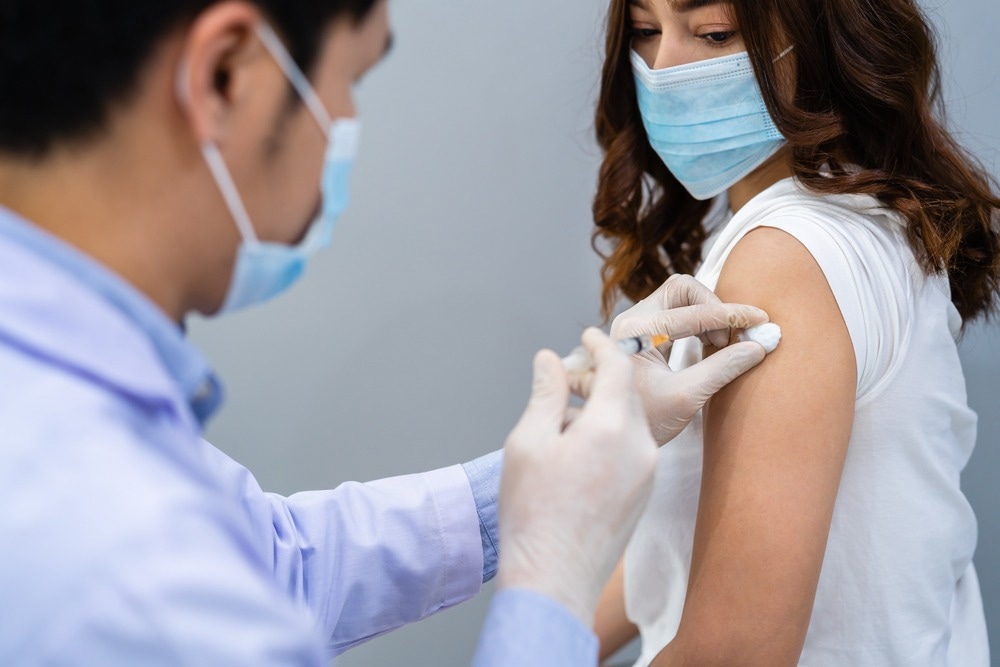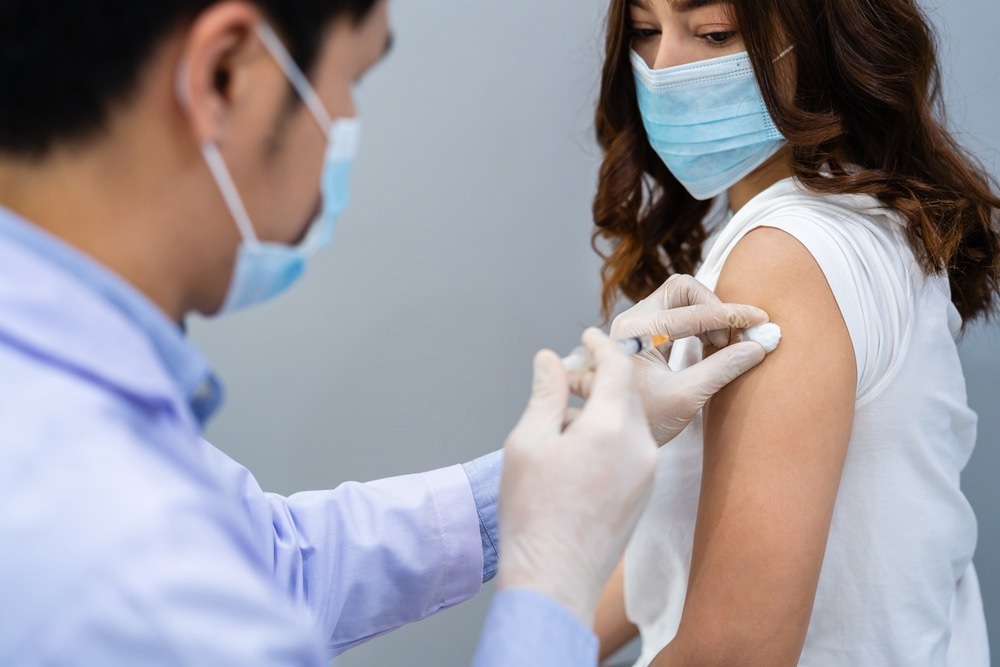
In a recent study posted to the medRxiv* preprint server, researchers investigated whether the time of day at which coronavirus disease 2019 (COVID-19) patients receive their severe acute respiratory syndrome coronavirus 2 (SARS-CoV-2) vaccinations influences the vaccine effectiveness (VE).

Background
Circadian rhythms are biological function oscillations that occur regularly and enable the alignment of an organism’s physiological clock to the day and night cycle. The rhythms originate from gene expression regulating-molecular clocks and therefore organize cell-based functions into everyday cycles. Studies have reported that the rhythms affect immunological pathways; however, the impact of circadian rhythms on the outcomes of SARS-CoV-2 vaccinations has not been well-characterized.
About the study
In the present population-level study, researchers examined the associations between the timing of SARS-CoV-2 vaccination and VE in terms of breakthrough infections (BTIs).
The study comprised 1,515,754 individuals aged ≥12 years with ≥1 time-stamped vaccination and no history of SARS-CoV-2 infections before the completion of the primary two-dose vaccinations. The team retrospectively analyzed MHS (Maccabi healthcare services) database EMRs (electronic medical records) covering the period between 19 December 2020 and 25 April 2022, including two SARS-CoV-2 infection peaks observed during the dominance of SARS-CoV-2 Delta and Omicron variants of concern (VOCs).
Individuals with documented SARS-CoV-2 infections before the vaccination date and those with missing vaccination timestamps were excluded from the analysis. The primary and secondary study outcomes were SARS-CoV-2 breakthrough infections (BTIs), confirmed by antigen testing or PCR (polymerase-chain-reaction) analysis, and SARS-CoV-2 infection-related ED (emergency department) visits, respectively.
The team primarily compared individuals who exclusively received COVID-19 vaccinations in the morning (between 8:00 am and 11:59 pm), afternoon (between 12 pm and 3:59 pm), or evening (between 4:00 pm and 7:59 pm). Cox multivariate regression modeling was used for the analysis with data adjustments for comorbidities, sex, and age, and the hazard ratios (HRs) and numbers needed to treat (NNT) were calculated.
Results
Almost all (99%) of the study participants received COVID-19 BNT162b2 messenger ribonucleic acid (mRNA) vaccinations, and the remaining were vaccinated with mRNA-1273 vaccines. The majority of the individuals were vaccinated in a 12-hour period between 8 am and 8 pm. Among the vaccinees, 313,844 individuals, 292,278 individuals, and 236,348 individuals received D1 and D2 exclusively in the morning, afternoon, and evening, respectively.
The team excluded 11%, 10% and 12%, and 9% of individuals for the first dose (D1), second dose (D2) and third dose (D3), and fourth dose (D4), respectively, due to missing vaccination timestamps. Among the MHS members, 81%, six percent, six percent, and six percent were Jewish, orthodox Jews, Arabs, and former Soviet Union residents, respectively.
The morning and evening vaccinees had equivalent numbers of SARS-CoV-2 tests. The number of BTIs was different for different timings of vaccination, with the highest numbers correlating with evening vaccinations and the lowest numbers correlating with vaccinations between the LM (late morning) hours and EA (early afternoon) hours. The timing of vaccination continued to be significant after adjusting for patient sex, comorbidities, and age (afternoon versus evening HR 0.9).
Consistent results were obtained for the primary (D1 and D2) and booster (D3 and D4) vaccinees. A sinusoidal association was observed between SARS-CoV-2 vaccination timing and BTI risks, in accordance with a circadian rhythm in VE, with durations in the nine-hour to 15-hour range, dependent on the dose of vaccination.
The estimated maximal PTS (peak-to-trough) HR alterations values for BTI were 0.1, 0.1, and 0.3 for D1 and D2 combined, D3, and D4, respectively, translating to NNT values ranging between 19 and 55 by the end of the study period provided COVID-19 patients were transferred from the vaccination time slots yielding the lowest benefit to the most beneficial ones.
The timing of SARS-CoV-2 vaccination altered BTI risks by nine to 25%, based on the number of vaccination doses received and participant age. The immunological benefits of receiving vaccinations in the daytime were pronounced among individuals aged below 30 years and those aged above 60 years. In contrast to BTI results, SARS-CoV-2 infection-associated ED visits were found to correlate with the comorbidities and age of the study participants but did not correlate with vaccination timings.
For primary vaccinations (D1 and D2) and the initial booster vaccination (D3), advancing age correlated with HR peak shifts to later daytime hours, probably reflective of biological rhythm changes and immunological experiences by age. For the eldest individuals, the circadian rhythms resembled those for D4. Lower BTIs among the elderly could be because elders adhere to precautionary measures and non-pharmaceutical interventions (NPIs) such as social distancing and mask-wearing against COVID-19 more than youngsters, leading to lesser SARS-CoV-2 exposure.
Conclusion
To summarize, based on the study findings, SARS-CoV-2 vaccinations between the LM and EA hours were significantly associated with fewer BTIs than other vaccination times. The timing of SARS-CoV-2 vaccination timing altered BTI risk by 8.6% to 25%, based on the age of the patients and the number of vaccination doses received. The findings highlighted that vaccinating older individuals and children during the LM or EA hours could confer maximum vaccine-induced immune benefits.
*Important notice
medRxiv publishes preliminary scientific reports that are not peer-reviewed and, therefore, should not be regarded as conclusive, guide clinical practice/health-related behavior, or treated as established information.
- Hazan, G. et al. (2022) "BIOLOGICAL RHYTHMS IN COVID-19 VACCINE EFFECTIVENESS". medRxiv. doi: 10.1101/2022.10.31.22281719. https://www.medrxiv.org/content/10.1101/2022.10.31.22281719v1
Posted in: Medical Science News | Medical Research News | Disease/Infection News
Tags: Antigen, Cell, Children, Circadian Rhythm, Coronavirus, Coronavirus Disease COVID-19, covid-19, Electronic Medical Records, Gene, Gene Expression, Healthcare, Omicron, Polymerase, Respiratory, Ribonucleic Acid, SARS, SARS-CoV-2, Severe Acute Respiratory, Severe Acute Respiratory Syndrome, Syndrome, Vaccine

Written by
Pooja Toshniwal Paharia
Dr. based clinical-radiological diagnosis and management of oral lesions and conditions and associated maxillofacial disorders.
Source: Read Full Article